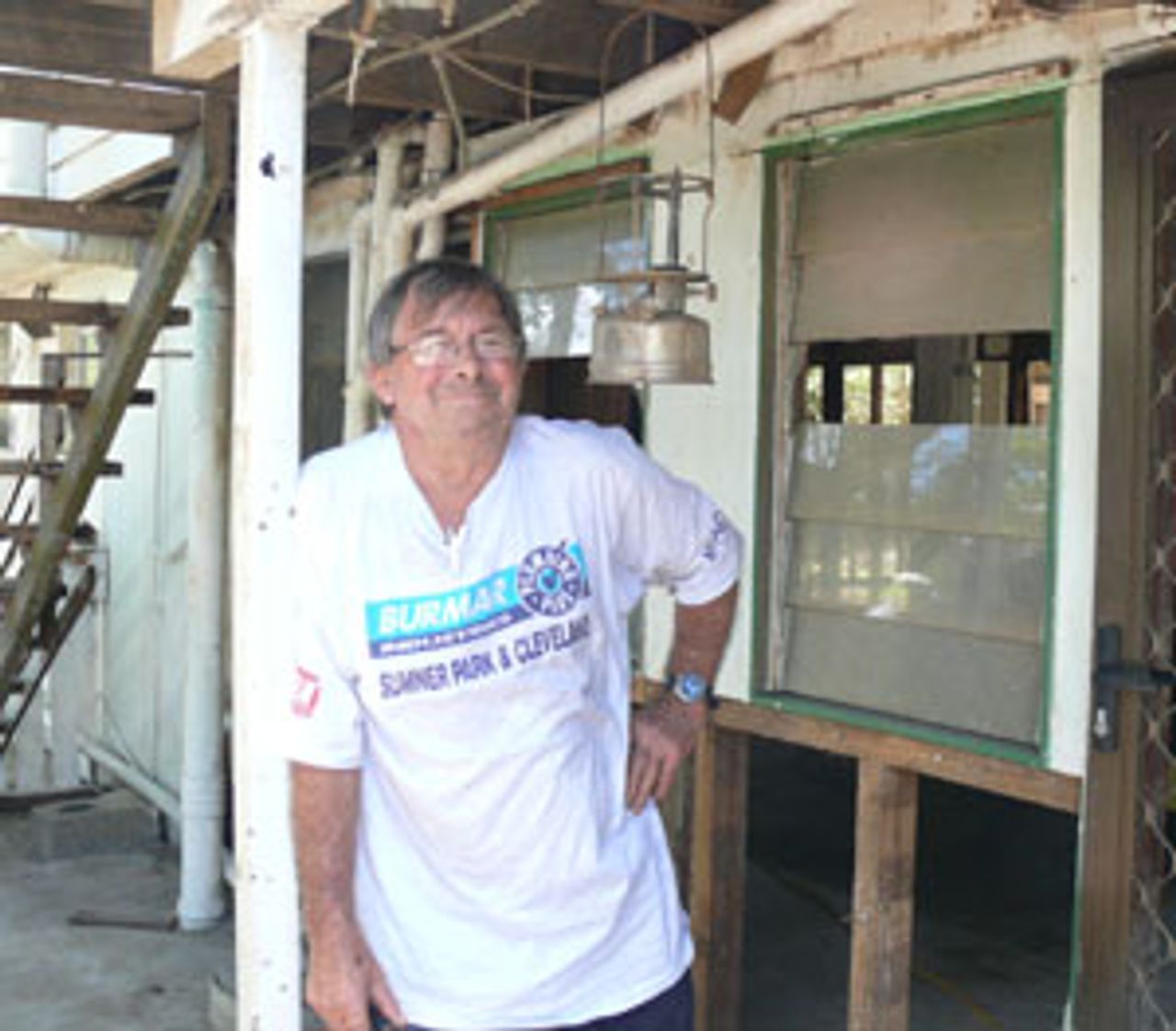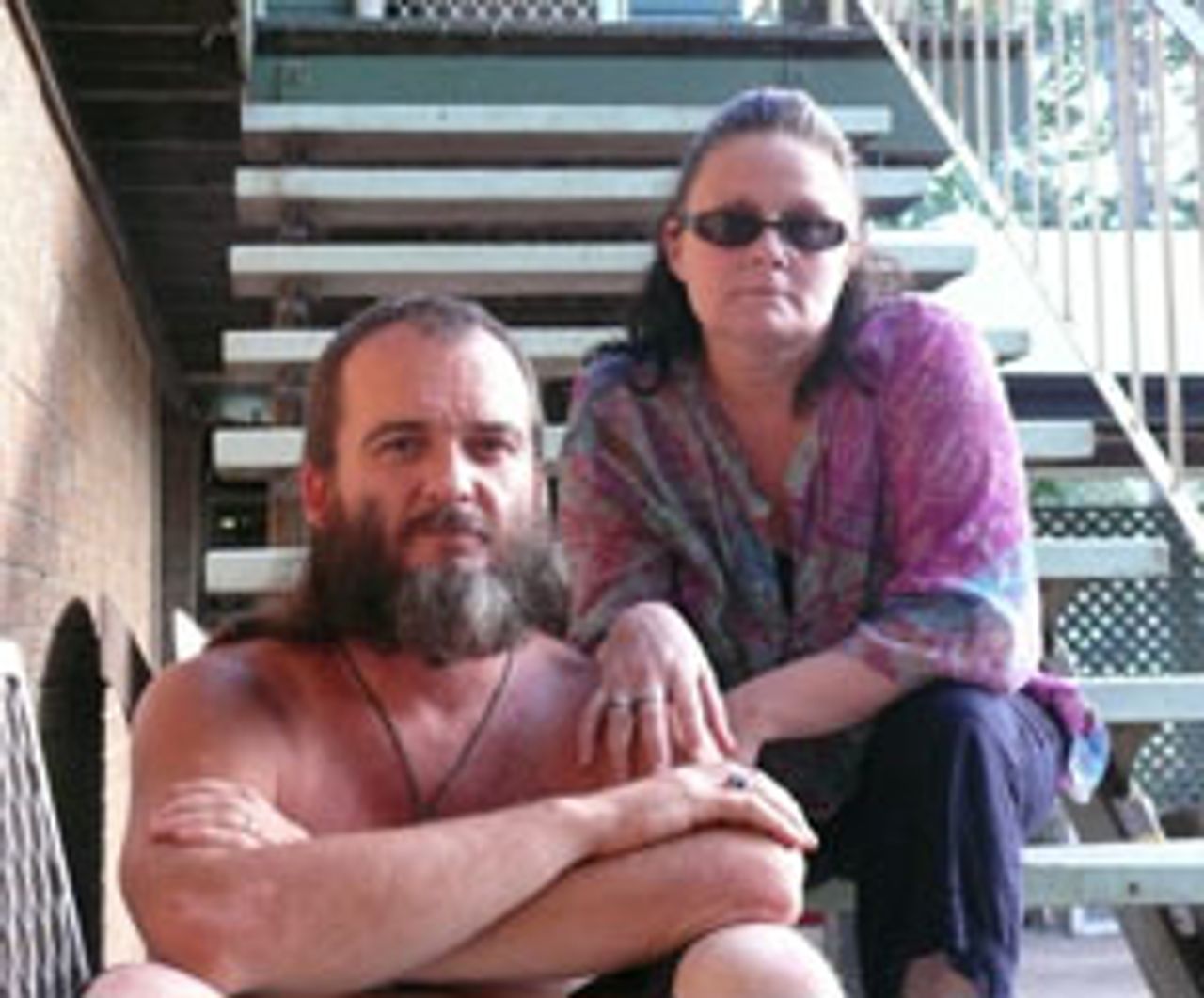World Socialist Web Site reporters on Tuesday visited the Brisbane suburb of Goodna, which was seriously flooded on January 13. Hundreds of homes in the working class area, which has a population of about 8,000, were severely damaged and remain uninhabitable.
Anger is growing as residents, who are mostly on low incomes, have lost everything. The frustration is intensified by the hurdles erected by the federal and state Labor governments to accessing the inadequate relief funding, and the refusal of insurance companies to pay out claims.
 Frank Beaumont outside his wrecked Goodna home
Frank Beaumont outside his wrecked Goodna homeThe WSWS team spoke with Frank Beaumont, a retired truck driver invalided by a work-related accident. His home was completely engulfed by floodwaters, apart from the last two rows of tiles on his roof.
Beaumont said he only received an emergency warning to his mobile at 3.35 p.m. on the day the flood hit. He had already evacuated with his wife Susan and their two daughters earlier as water levels were rising rapidly.
Even though the couple qualified for the government means-tested assistance, Beaumont said that, like many others in the area, they were experiencing “great difficulty” obtaining anything substantial.
“You can’t even apply for the assistance until you prove that you’re not insured or you’re unable to obtain a payment from your insurance company, if you have one. Even then, the assistance is only $5,000 to replace white goods and $14,000 for rebuilding.
“We actually had an appointment last Saturday for the government agency QBuild [Queensland Department of Public Works] to do an assessment but were phoned and told it couldn’t go ahead until the insurance company officially informed us it would not pay.
“Even if people are able to access the relief payment you have to get at least two quotes—from plumbers, electricians, plasterers or any other trades that you need to do the work—and these have to be submitted and approved. To repair the damage here I estimate will be a minimum of $90,000, so the government grant is just a pittance. We’ve lost everything.
“Starting over again is going to be difficult and the various government agencies are not making it any easier. Until we get some positive feedback from somewhere we are going to continue to live like hermits. They say people should have taken out insurance. What ordinary working man can pay the levels of insurance they want to cover floods?”
 Dirk Devos
Dirk DevosDirk Devos, a father of two, said his home was completely submerged by the floods and he was only able to save a few personal items, such as photos and some documents. He moved other household goods upstairs, placing some in the ceiling space, mistakenly believing they would be out of reach of the rising water.
Devos has lived in the house for four years and knew that the area had been affected by flooding in 1974, but explained: “I studied geology at university after finishing school and it was basically a published fact that there was no chance of that occurring again with the Wivenhoe Dam in place.
“I was fairly confident that we were safe here. It seems that the operation of the dam may have contributed to the problem by allowing the water to increase too much instead of releasing it in a timely way. Many people I know are furious about this.”
Devos said he was insured but it was not clear if he was covered for flood damage. He was not eligible for much of the government means-tested assistance and had received only $1,000, with another $2,000 for his children. His partner did not qualify for a similar payment because she was a New Zealand citizen. Devos estimated that it would cost about $10,000 to repair his home and he would have to do most of the work himself.
“The government is raising a lot of money from the levy and such, but it seems that it’s not going to the ordinary guy in the street. Cutting money from other social services to raise a fund will only make the problems for people worse in the long run,” he said.
 Michael Luxford and Elaine Hutchinson
Michael Luxford and Elaine HutchinsonElaine Hutchinson and her partner Mick Luxford have been in their home for about seven years. Hutchinson earns $35,000 a year as a gaming attendant in a club and Luxford is currently working at a gas pipeline transportation company.
Hutchinson said she had been told the street had “gone under” in the 1974 floods only after she purchased their home. Luxford commented: “We also heard later that with Wivenhoe Dam in place, everything was good.”
Hutchinson added: “Honestly I didn’t realise what could happen. After we got flash flooding in 2009, and a lot of water under the house, it got me thinking. I started to worry and began to enquire about a buy-back program that was operating to get people out of flood-prone areas.
“After buying back three houses at the end of the street, the program was closed down because of lack of government funding.” A similar scheme has been operated by the Brisbane City Council since 2006 but only 45 properties have been bought back.
Luxford said their home had been completely submerged. Describing the damage, he said: “The ceiling caved in and so did the covering on the walls. Everything had to be stripped out. It was three or four days before we could get back in to begin to clean up.”
The couple has no flood insurance. “Only a handful of people on this street have insurance and they seem to be having a lot of trouble getting money out of the insurance companies,” Luxford said
“A government agency came around to do an assessment. I need to get quotes and may be able to get up to $14,000. We got a payment of $4,000 for household contents but this will not cover much—we lost everything,” Hutchinson said. “People like us buy homes in these areas because it is affordable but then cannot get insurance because it’s a flood-prone area.”
Thi Hien Lau Do’s home was also completely submerged and she is now living with her mother on higher ground in Bellbird Park. Her daughter and her 20-year-old son are staying elsewhere.
Lau lost everything in the flood. She has no job, insurance or savings and her husband is on a sickness pension. She migrated to Australia in 1984 from Haiphong in Vietnam and lived in Sydney before moving to Brisbane with her husband in 2002. She worked in a shoe shop in Sydney and her husband worked in a bakery.
“This is terrible. I cry every day and every night and have been upset so badly that I wanted to go to the hospital for help. I don’t know what to do. Now I have my friend who is helping me, it is better,” she said.
“I just cried and cried every day for four or five days and could not stop thinking about what we could do. I was worried about my son and daughter and what would happen to their education.
“Everybody is very sad in my family. This is the first time in Australia I’ve had such hurt in my heart because I have lost everything and we’re living hand to mouth now. We just don’t know what our future will be. If I’d known my future was going to be like this I would not have moved here.”
A friend and retired financial planner, who is currently assisting Lau, explained her plight. “There’s a bit here and bit there of assistance but it’s not clear,” he said. “QBuild may be able to help and they’ve defined her property as severely damaged, but the inside of the home will not be rebuilt. All they will do is to make it livable. They’ll put in a kitchen bench, a four-burner hot plate. We don’t know if they’ll sheet the walls. All we know is that they’ll do the toilet and the bathroom walls.
“Everything has to be costed before QBuild decides on what it will do. The idea is just to get them back in here. She might be allowed to get an air conditioner but only if she can prove that someone in the house has a medical condition. There was ceiling insulation but they won’t put in insulation.
“The flood-plain advice that people were being given has been wrong—either purposely or for some other reason—and people that have no money are being hit,” he said.
